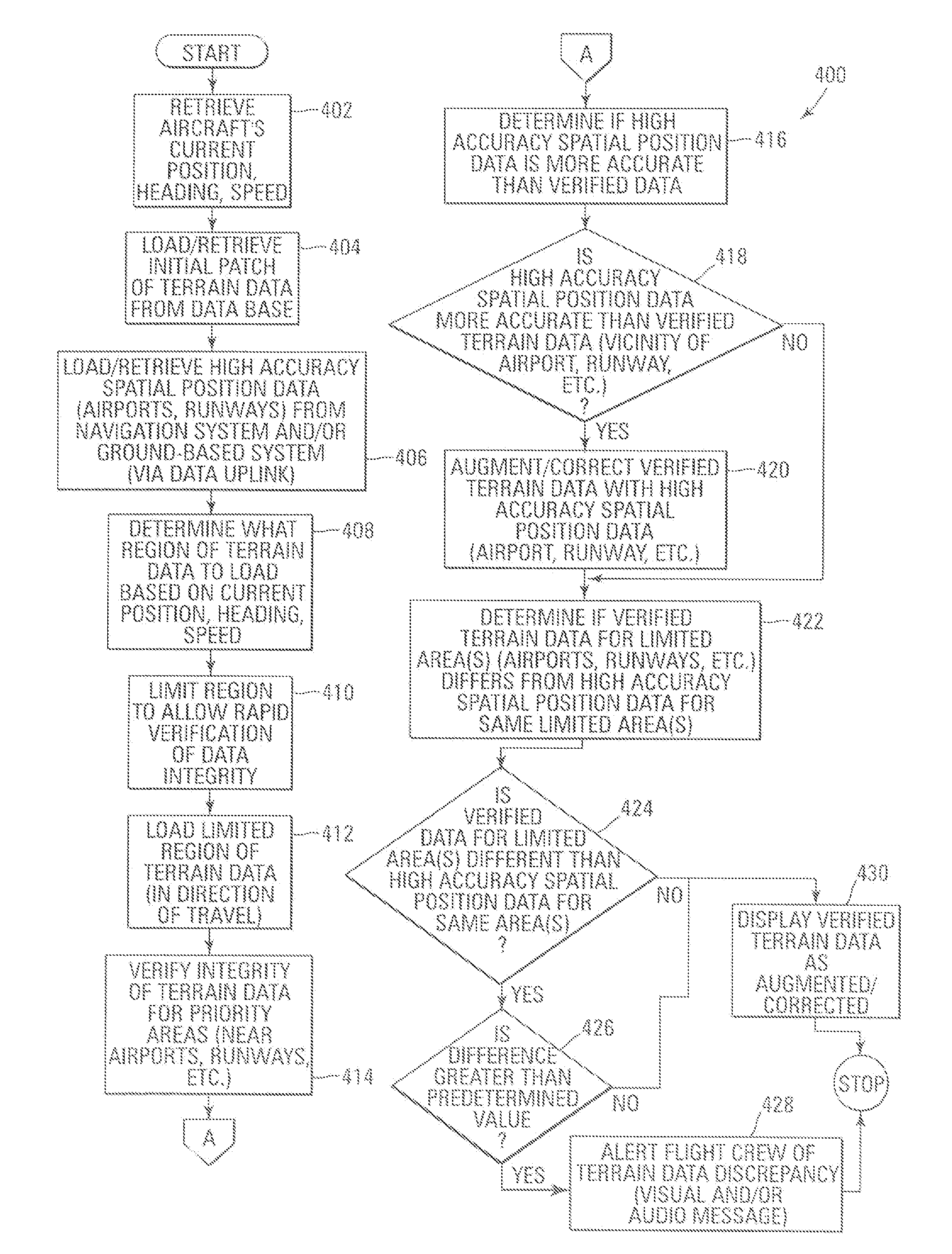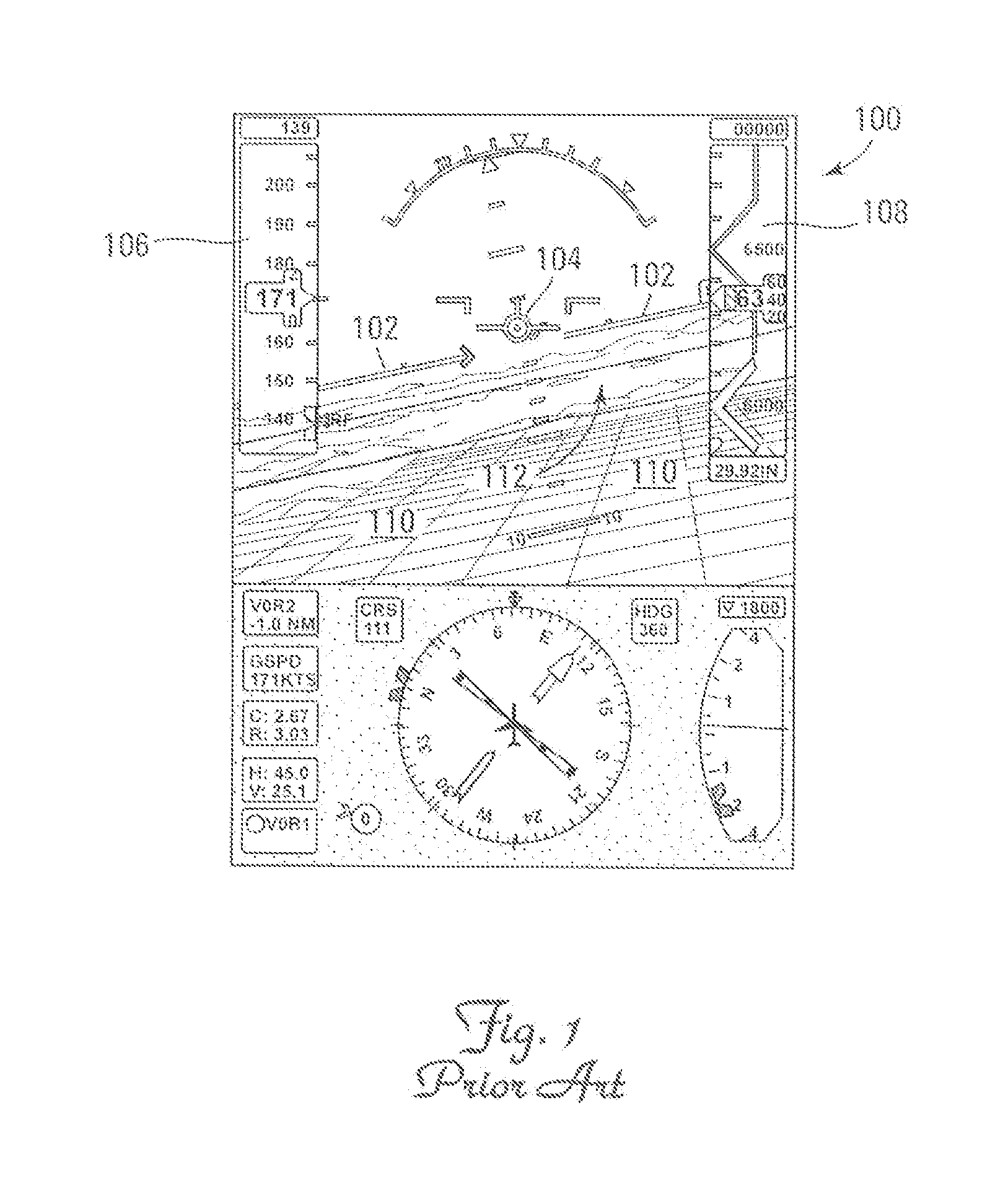System and method for enhancing computer-generated images of terrain on aircraft displays
a computer-generated image and aircraft display technology, applied in the field of display systems, can solve the problems of significant non-intuitive imaging issues, significant data integrity issues, and similar issues may arise in other applications, and achieve the effects of rapid initialization of data, and enhancing the visibility of terrain
- Summary
- Abstract
- Description
- Claims
- Application Information
AI Technical Summary
Benefits of technology
Problems solved by technology
Method used
Image
Examples
Embodiment Construction
[0016]With reference again to the figures, FIG. 2 depicts a block diagram of an example system 200 for ensuring the correctness of terrain information on an aircraft display (e.g., continuous, three-dimensional perspective view display), which can be used to implement a preferred embodiment of the present invention. For this example, system 200 includes a processing unit 202, a database 204, a navigation system 206, a high speed data link 207, a graphics display generator 208, a visual display 210, and one or more vision sensor systems 212. Notably, it should be understood that although system 200 appears in FIG. 2 to be arranged as an integrated system, the present invention is not intended to be so limited and can also include an arrangement whereby one or more of processing unit 202, database 204, navigation system 206, data link 207, graphics display generator 208, visual display 210 and one or more vision sensor systems 212 is a separate component or a subcomponent of another s...
PUM
 Login to View More
Login to View More Abstract
Description
Claims
Application Information
 Login to View More
Login to View More - R&D
- Intellectual Property
- Life Sciences
- Materials
- Tech Scout
- Unparalleled Data Quality
- Higher Quality Content
- 60% Fewer Hallucinations
Browse by: Latest US Patents, China's latest patents, Technical Efficacy Thesaurus, Application Domain, Technology Topic, Popular Technical Reports.
© 2025 PatSnap. All rights reserved.Legal|Privacy policy|Modern Slavery Act Transparency Statement|Sitemap|About US| Contact US: help@patsnap.com



